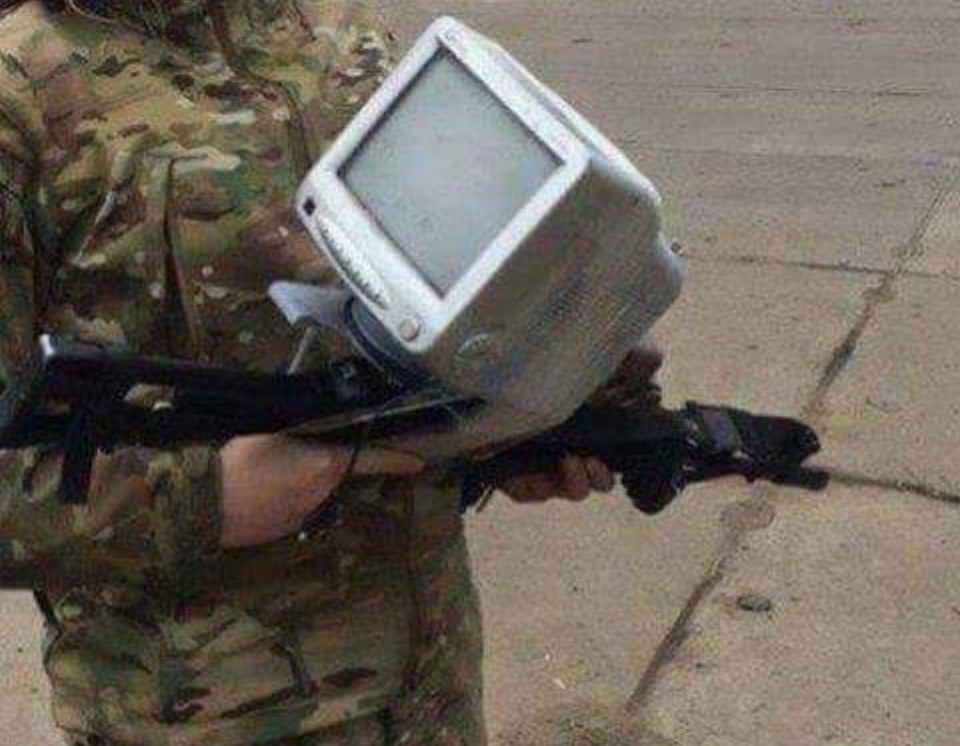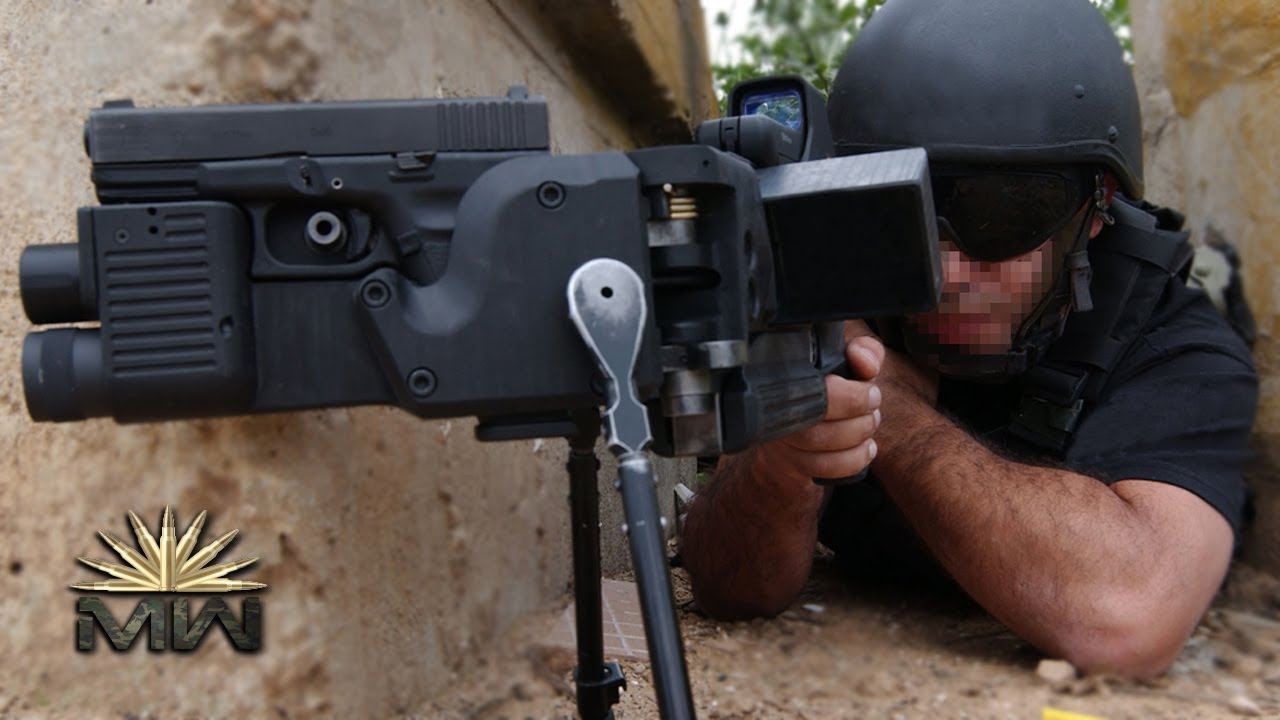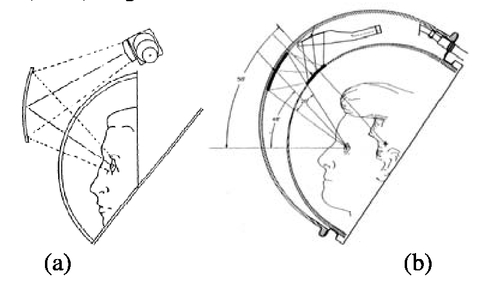Not much of an answer as others kind of cover it.
I just wanted to add this though:

https://www.alamy.com/stock-photo-nasa-astronaut-john-glenn-uses-binoculars-to-look-at-the-earth-through-138988965.html
NASA astronaut John Glenn uses binoculars to look at the Earth through the window of the Mercury-Atlas 6 spacecraft during the Friendship 7 mission February 20, 1962 in Earth orbit.
So, he tried, and maybe it worked because the visor he had on then looks a lot closer to the face than modern EVA space suits.
But as previous posts suggested, if sighting is an issue the most obvious way is to go with some form of televised sights.
It is an issue the military have been looking at for years.

If you still wanted the display helmet mounted, as mentioned before, easily done, even moreso given that current space suit helmets are fixed and not mobile. The issue is just then how the wearer adjusts the length and angle to best fit within their vision, which again is something looked at for years (NVG for air crew for example)

Again, for where the eyeball cannot quite get to where you need it, for a variety of reasons, you have ideas such as this.

so good, copied by these guys

and COTS ideas:

And of course, bringing the two together, as mentioned by others.

People are looking into it:
https://patents.google.com/patent/US9500868
Consequently, a space suit helmet display system capable of meeting the demands of future space suit helmet display requirements in a decoupled-helmet, helmet-mounted design with sufficient eye relief is desirable.
From which appeared these:
FIG. 2 is a simplified top down illustration of an astronaut's head inside a helmet according to an exemplary embodiment;

FIG. 2 is a simplified top down illustration of an astronaut's head 202 inside a helmet 200 according to an exemplary embodiment. FIG. 2 is not to scale, but provides an example of the relative placement of features; additionally, although helmet 200 may comprise multiple layers and various shapes, the embodiment depicts helmet 200 as a circular barrier around the astronaut's head 202 that protects a pressurized bubble of oxygen-rich atmosphere 212 for the astronaut from the atmosphere 214, or lack thereof. The astronaut's eye 204 is shown having a direct viewing path 206 to the focusing lens assembly 210 located within housing 208. The distance between the pupil of the eye 204 and the focusing lens assembly 210 is a first predetermined distance, referred to as the first eye relief 216.
Housing 208 may include other features of the display system. It is readily appreciated that housing 208 may be of any shape or volume, material, transparency or orientation that is suitable to meet the environmental and design requirements of the space suit helmet display system. Additionally, the housing 208 or individual components of the display system may be placed at any location on the helmet, and may be designed to operate with the right or left eye individually or placed centrally so that either eye may comfortably view the image generated by a single display.
NASA closed this one:
The Heads-In Display must work inside a spacesuit without being cumbersome and must be optimized for the proximity of the helmet bubble to the crewmember’s eyes.
https://www.yet2.com/active-projects/seeking-ar-vr-heads-in-display/
Key performance parameters (targets) include:
Graphical Data Presentation: SXGA @ 40 deg FOV (possibly biocular);
Decoupled from User's Head - Large Eyebox: 100 mm x 100mm x 50mm (D);
Sunlight Readability: 500 fL inside visor, 1800 fL outside visor (>10 to 1 contrast).
NASA developed a sextant that an astronaut could use, both without helmet and with helmet visor on:

NASA again:
Two NASA HMD prototypes:
(a) Wright-Patterson AFB HMD layout
(b) Technology Innovative Group HMD layout

NASA has conducted several researches for the implementation of HMDs in its EMU. This effort resulted in the production of four HMD prototypes. The Wright-Patterson AFB HMD (1987), the Hamilton Standard HMD (1988), the APA Optics HMD (1991) and the Technology Innovative Group HMD (1991).
All the NASA HMDs are mounted on the bubble helmet.
This prevents the use of the ExtraVehicular Visor Assembly.
Moreover these systems have high power consumptions 5 to 20 W and use high voltages to control the image source (mini CRT).
The Hamilton Standard HMD model is the only one that uses a LCD backlighted by a halogen lamp as image source.
Obviously not adopted.
https://www.spiedigitallibrary.org/conference-proceedings-of-spie/10567/105672S/Study-of-a-direct-visualization-display-tool-for-space-applications/10.1117/12.2308084.full?SSO=1
Theres 2 further links that might have been useful in there but one is dead and the other is behind a paywall.
But ripe for picking up and improving upon.
Many ideas or combination of ideas could work here.
The helmet is typically about 13inches and you can extract maybe a number from that but most information I have come across carries no inside dimensional details of the helmet.
NASA EXTRAVEHICULAR MOBILITY UNIT (EMU) LSS/SSA DATA BOOK.pdf
does not have dimensions.
My search terms might be lousy though.
Anyway, decided to see for myself:

so:
assume 13 in EMU helmet
assume head
6.33 in wide
8.11 in deep inc. nose
(the average human head measures 6-7 inches in width and 8-9 inches in
length)
results in:
eye to visor = 3.55 in (assuming flat plane)















